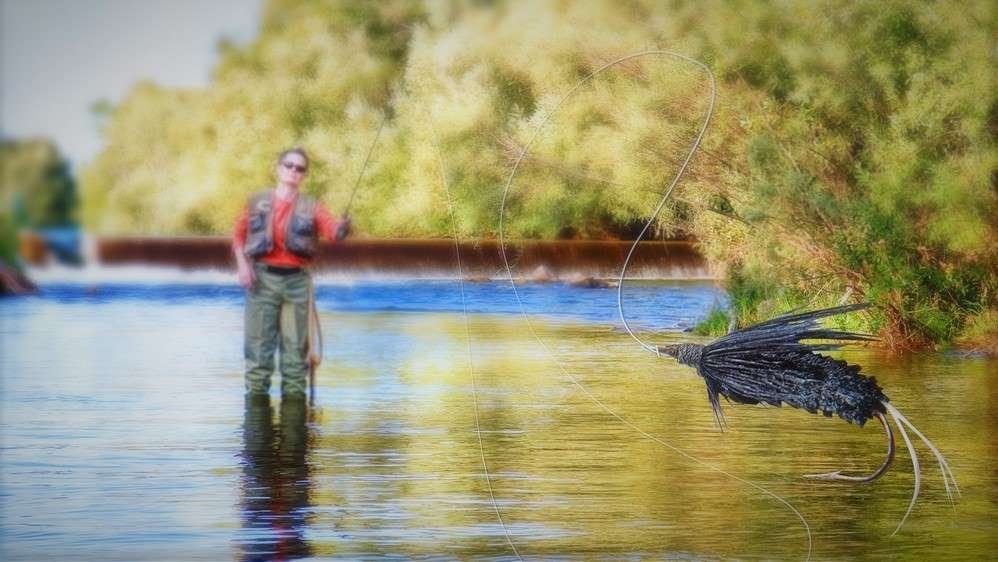How to Cast a Fly Fishing Rod: A Comprehensive Guide
Fly fishing is a popular and enjoyable outdoor activity that allows you to immerse yourself in nature while honing your angling skills. This article aims to provide valuable information for anyone interested in learning how to fish, acquiring the right fishing gear, or improving their fishing skills. Let’s dive into the world of fly fishing and learn how to cast a fly fishing rod effectively.
Quick Guide to Fly Fishing
Assembling the Fly Fishing Rod
- Begin by assembling the fly fishing rod. Slide the segments together, aligning the dots. Don’t force or twist the segments too hard, as they may crack.
- Slide the reel into the reel seat and attach it securely.
- Make a loop knot at the end of the fly line and use it to connect the leader and tippet.
- Ensure the fly line is spooled tightly on the reel to avoid knots.
- Connect the leader to the end of the fly line with a fishing knot. The leader should be at least 9 feet (2.7 m) long.
- Fix a tippet to the end of the leader with a knot, making sure it’s at least 4 feet (1.2 m) long.
- Attach a fly lure to the end of the tippet with a knot.
- Set the fly line about 1–2 feet (0.30–0.61 m) longer than the fishing rod.
How to Cast a Fly Fishing Rod Overhead
The overhead cast is the standard fly fishing cast, and mastering it is crucial. Here’s how you do it:
- Stand with feet shoulder-width apart for short to medium ranged casts, and with one foot forward for longer casts.
- Hold the rod with your thumb on top of the grip, keeping the butt in line with your forearm and the reel pointed down.
- Lay the line straight on the ground, stretch out about 10 feet, and stand square to your target.
- Bring the rod up and backward in one motion, stopping abruptly when it passes behind you.
- Allow the line to unroll in the air behind you, pausing long enough for it to fully unfurl.
- Move the rod forward to bring the line in front of you, lowering the tip as the line unrolls.
- Don’t snap the rod down sharply, or the tension in the line could cause the cast to go straight down.
How to do a Roll Cast with a Fly Fishing Rod
The roll cast is ideal for narrow waterways and less likely to disturb fish. Follow these steps:
- Draw the rod up and back to drag the end of the line across the water with a slow, smooth motion.
- Stop the stroke with the rod tip high when a loop has formed behind you.
- Accelerate the rod forward quickly and move forward with a smooth and consistent movement.
- End the cast by stopping abruptly, allowing the line to unroll and land gently on the water’s surface.
- Use the roll cast effectively if a strong wind at your back interferes with your overhead cast.
Fly Fishing for Beginners

Understanding the basics of fly casting, the types of casts, and the equipment needed is essential for beginners. Keep the language clear and simple, with helpful diagrams and illustrations to guide you. Learn how to hold and control the fly rod and avoid common mistakes beginners make.
Best Ways to Cast a Fly Rod
Different casting techniques have their pros and cons. To cast a fly rod far, practice various methods and find what works best for you. Set up a practice area at home and use a casting trainer to improve your technique. Proper technique is crucial for an enjoyable fly fishing experience.
Using a Fly Fishing Rod
When setting up a fly fishing rod, learn how to tie a leader and attach a fly. Practice casting and holding the fly rod in different fishing situations. Detecting and setting the hook when fly fishing is also essential for success.
Getting into Fly Fishing
Fly fishing is an excellent way to enjoy the outdoors and unwind. Start by acquiring the necessary gear and resources, and decide which type of fly fishing is best for you. Local resources and fly fishing clubs can be valuable sources of information and guidance.
Conclusion
Mastering the art of casting a fly fishing rod takes time and practice. Keep honing your skills and don’t be afraid to try new techniques. With dedication and the right resources, you’ll be well on your way to becoming an accomplished fly fisher.

